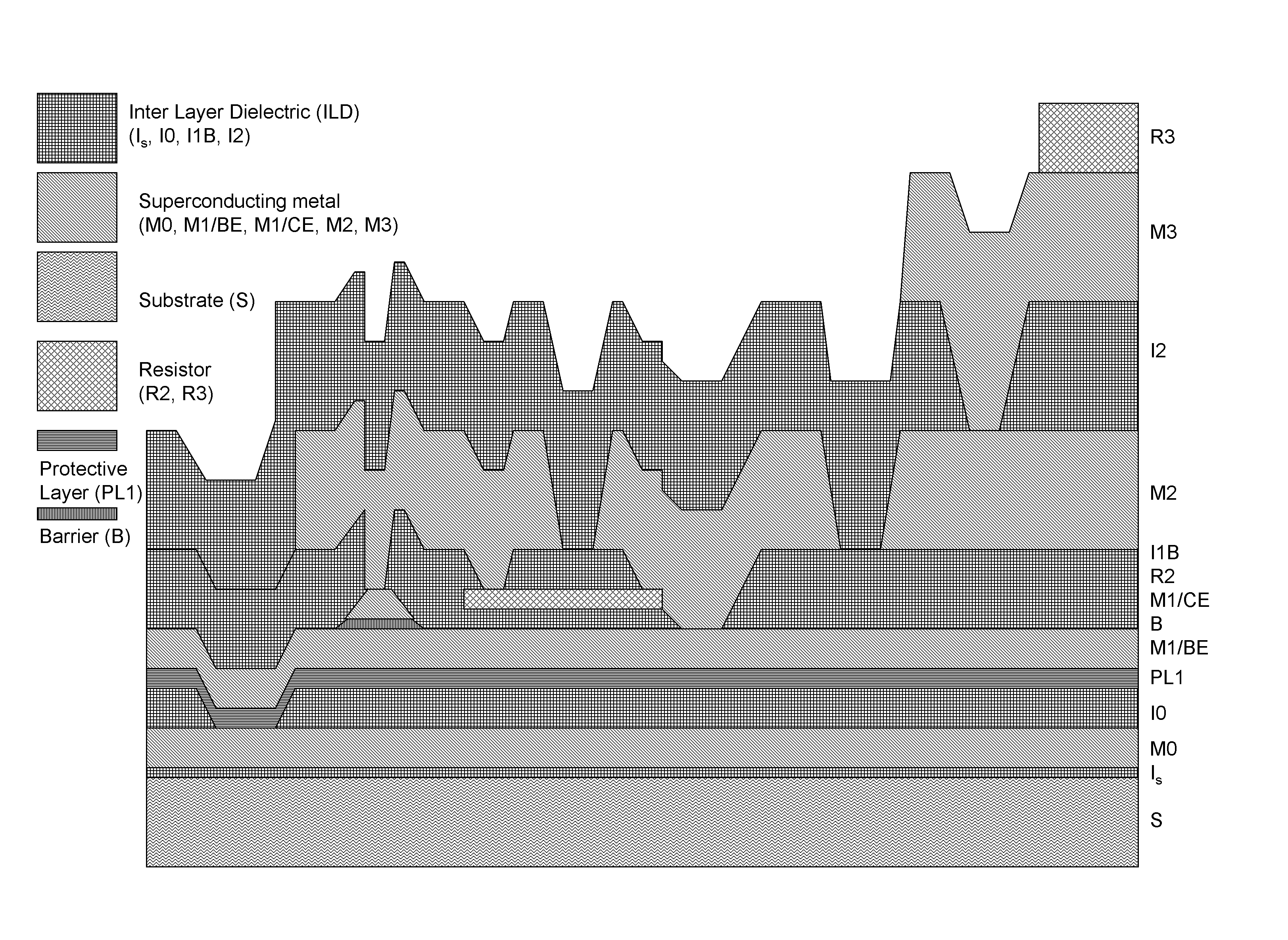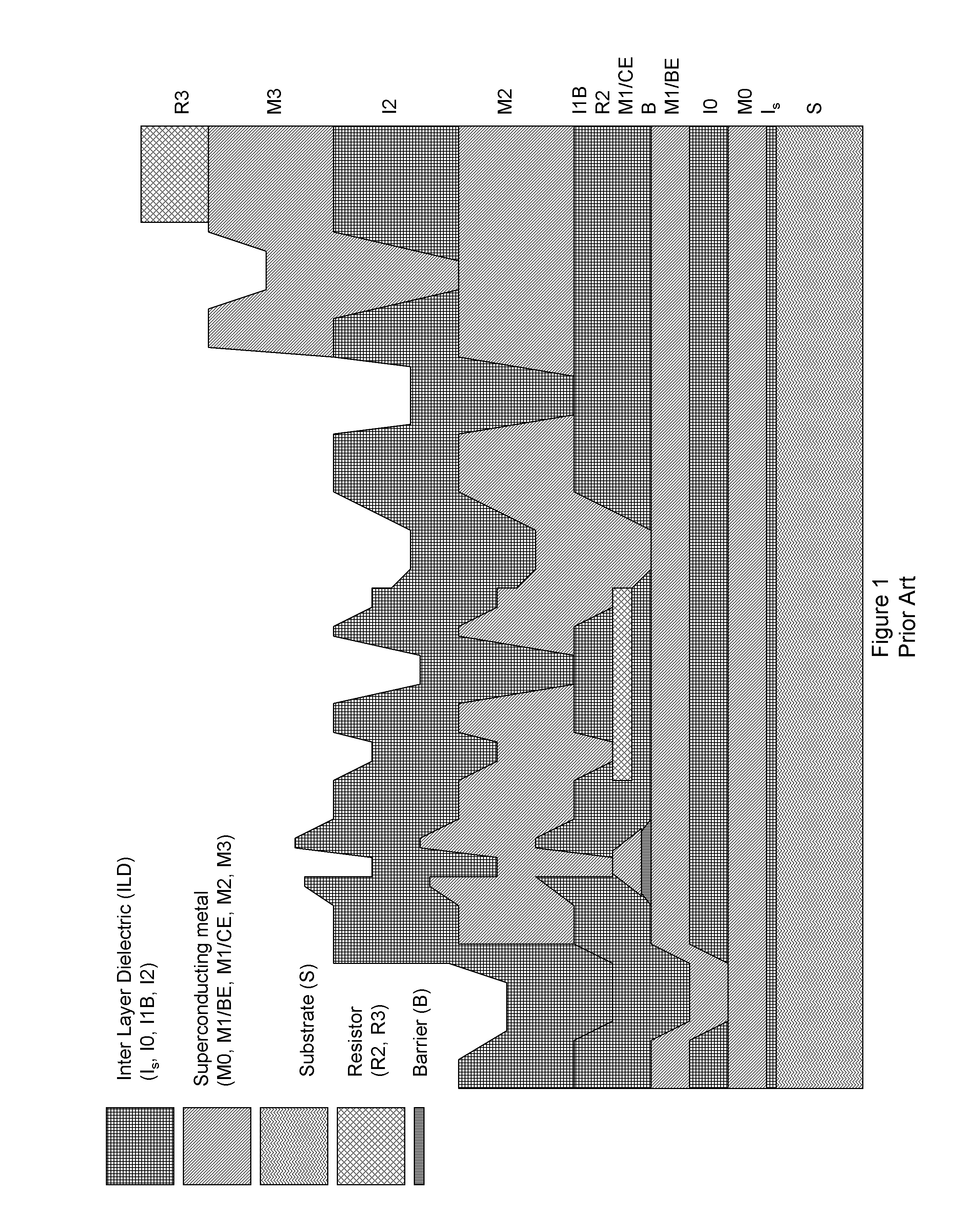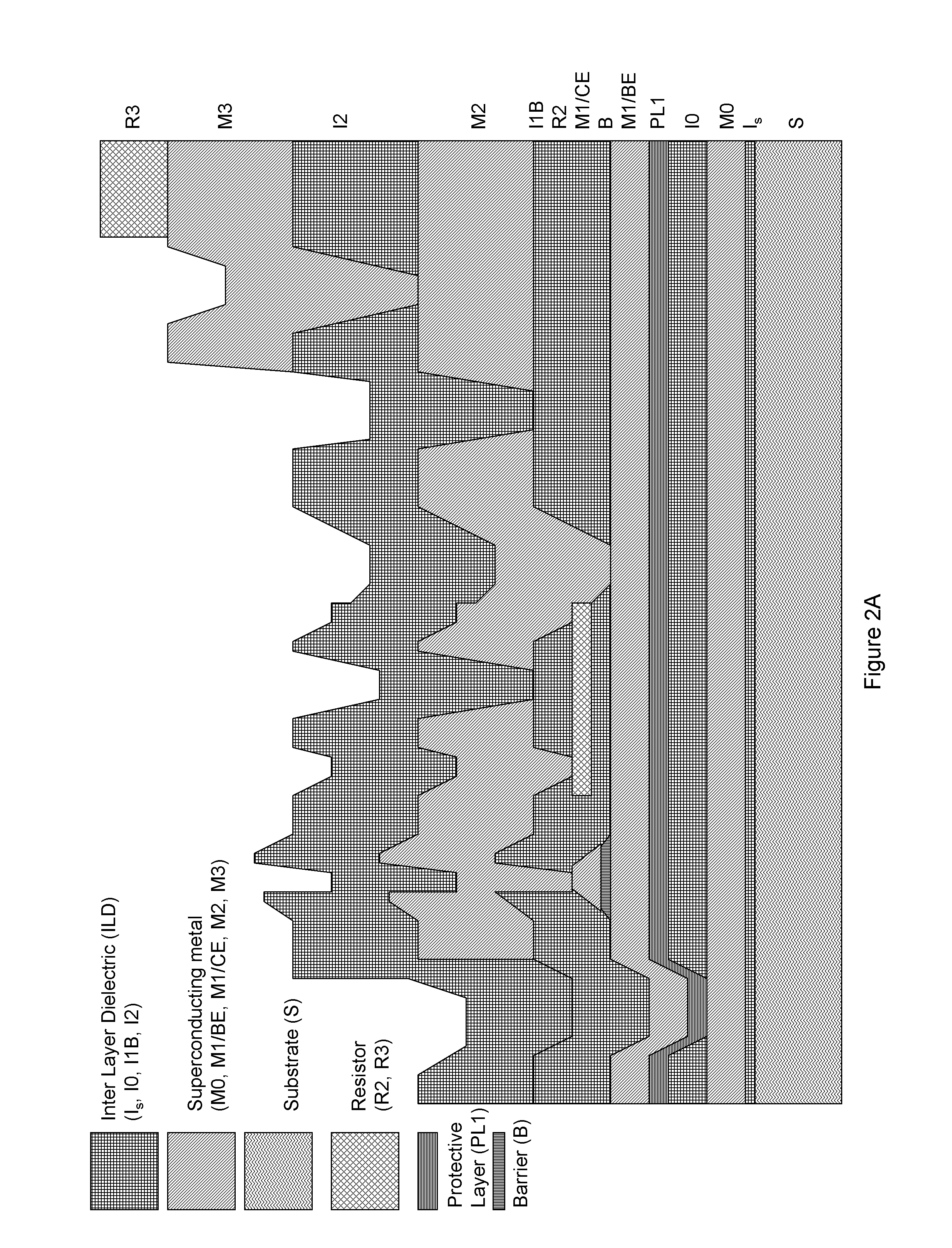System and method for providing multi-conductive layer metallic interconnects for superconducting integrated circuits
a technology of integrated circuits and metallic interconnects, which is applied in the direction of superconducting magnets/coils, superconductor devices, magnetic bodies, etc., can solve the problems of reducing the uncompensated non-uniformity of hydrogen or other impurity profiles, insulating materials are typically unsuitable, and the thickness of a conductive layer is typically limited, so as to reduce the uncompensated non-uniformity of hydrogen or other impurities
- Summary
- Abstract
- Description
- Claims
- Application Information
AI Technical Summary
Benefits of technology
Problems solved by technology
Method used
Image
Examples
Embodiment Construction
[0051]One preferred embodiment of the invention is obtained by modifying the standard Hypres IC process shown in FIG. 1 by including an extra Al layer on the Nb layers, as shown in FIGS. 2A-2D. This achieves, for example, a bilayer or trilayer conductor, which protects surrounding structures from the effects of e.g., hydrogen absorbed in the niobium, and may also provide a penta(hexa) layer Josephson junction with the niobium layers externally isolated. As noted above, the Josephson junction may inherently include an aluminum layer between the underlying niobium layer and the oxide; it is therefore possible to add a thin layer of aluminum over the oxide, to provide a generally symmetric structure. This added layer may require an additional etch step, and is not generally necessary; likewise, the intrinsic aluminum layer within the Josephson junction trilayer is typically insufficient to achieve the advantages according to aspects of the present technology. Note that the aluminum lay...
PUM
 Login to View More
Login to View More Abstract
Description
Claims
Application Information
 Login to View More
Login to View More - R&D
- Intellectual Property
- Life Sciences
- Materials
- Tech Scout
- Unparalleled Data Quality
- Higher Quality Content
- 60% Fewer Hallucinations
Browse by: Latest US Patents, China's latest patents, Technical Efficacy Thesaurus, Application Domain, Technology Topic, Popular Technical Reports.
© 2025 PatSnap. All rights reserved.Legal|Privacy policy|Modern Slavery Act Transparency Statement|Sitemap|About US| Contact US: help@patsnap.com



